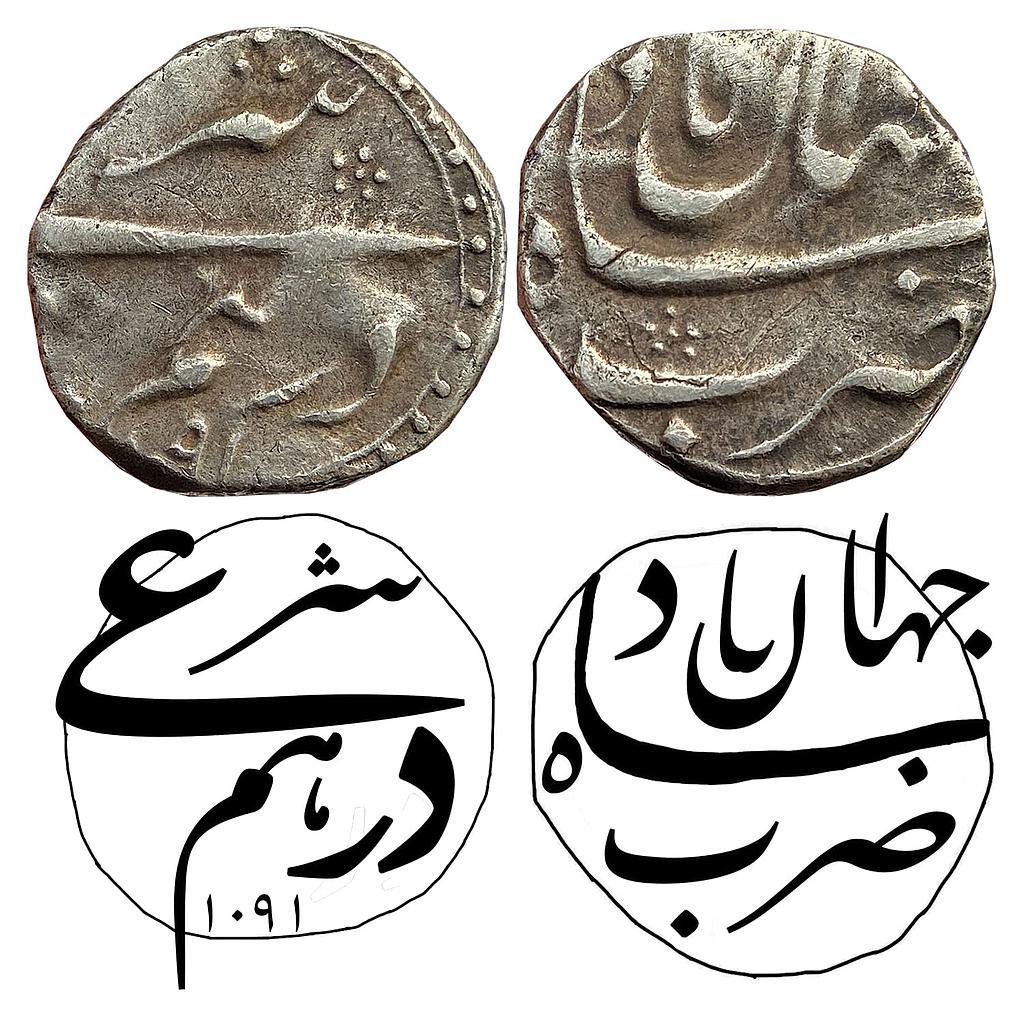Lot 485
Mughal Aurangzeb Shahjahanabad Mint Silver Legal Dirham
Auction # 10 Lucknow (Online)
- Estimated Price (INR)
- 200000 - 250000
- Price Realised -
-
Auction Completed!
- Catalog Reference #
- KM # 308.2
- Metal Composition
- Silver
- Lot Grade/Condition
- very fine
- Diameter
- 14.66 mm
- Weight
- 3.13 gms
- Denomination
- Legal Dirham
- Calendar/Year
- AH 1068-1118, 1658-1707 AD
Mughal, Aurangzeb (AH 1068-1118, 1658-1707 AD), Silver Legal Dirham, 3.13 gms, 14.66 mm, Shahjahanabad Mint, AH (10)91, KM # 308.2, very fine, very scarce.
Shara’i Dirham Of Aurangzeb
The name Shara’i Dirham or Dirham-e-Shara’i literally translates to ‘legal dirham’ where the legal system refers to the Islamic law (Sharia’) of which there are multiple interpretations. Within the Islamic legal framework there are specific guidelines that entail how financial transactions should be carried out and what should be their measure or ‘Nisab’. For example, paying the annual charity tax or Zakat entail paying 2.5 percent on admissible wealth that has remained in possession for a year, other injunctions address the payment of the dower (Mahr) by the groom to the bride, legal fines etc.
All of these rules however specify the measure in terms of Dinars (gold) or Dirhams (silver). Historically different regions and rulers have issued coins of varying weight and metal purity, and there is no homogeneity so that dirham in one region differs from dirhams in other region. However, as far as the Islamic law is concerned it defines what a dirham and dinar should be: Ibn Khuldoon in his Muqaddimah defines two types of dirhams legal (shara’i) and non-legal (ghair-shara’i) with the former being the medium of specification for the Nisab of legal transactions.
A legal dinar approximately weighs 72 grains (average sized wheat) or 4.25 grams, and a legal dirham weighs seven tenths of a dinar and therefore has a weight of 50.4 grains or 2.975 grams of at least 91.7% pure silver. Aurangzeb during his rule had revised the civil laws in the light of the Hanafi school legal jurisprudence. The issuance of the legal dirhams by Aurangzeb can be seen as facilitating the following of the revised laws.
As part of the revised laws, Jizya (poll tax) was also reimposed on the non-Muslim subjects. Historians have attributed the legal dirhams issued by Aurangzeb specifically for the purpose of collecting Jizya which is however erroneous and based on a single royal decree (farman) mentioned in Mirat-i-Ahmadi (1307 AH).
However, there is no clear evidence to substantiate or negate that these legal dirhams were not issued for the general purpose of conducting legal transaction irrespective of the religious affiliation of the subjects. The revision of the medium of common exchange i.e., the silver rupee to a dirham could be seen as an exercise by Aurangzeb to align the state closely with the conception of the ideal Islamic state which is exemplified by the rule of Umar Al-Farooq RA the second rightly guided Caliph (Rashidun) of Islam, who had also formalized the measure of the dirham and dinar within the context of the Sharia.
The scarcity of the legal dirhams of Aurangzeb indicate that the established trade networks and commercial practices in Hindustan resisted the change and the rupee prevailed. As compared to the rupees of Aurangzeb that were issued from numerous mints from all over Mughal Hindustan, the legal dirhams were issued only from a handful mints: Katak, Multan, Lahore, Akbarabad, Ilahabad, Patnah, Shahjahanabad. The specimen offered here was issued from Shahjahanabad and presents a valuable and historic addition to the collection of Mughal coin enthusiasts.
